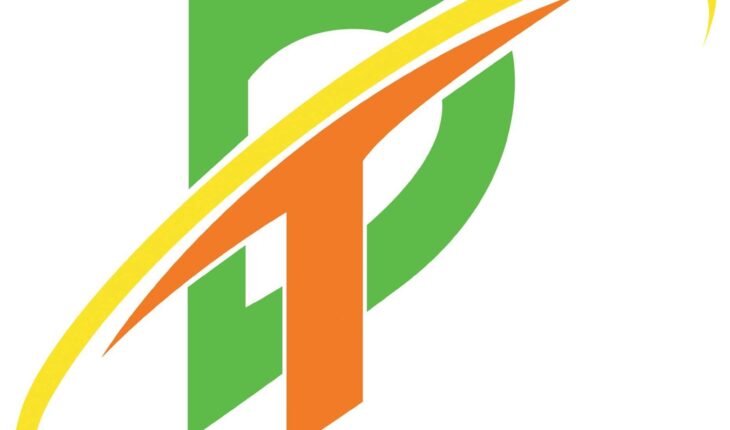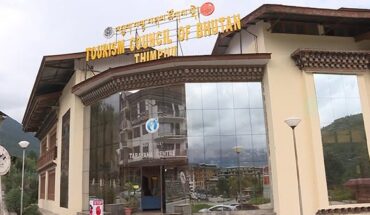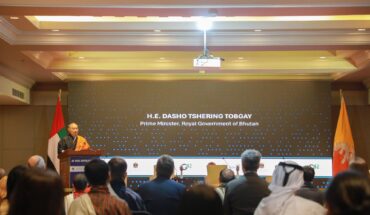
KINZANG DORJI TSHERING
Thimphu
Beginning July 1, 2025, Bhutan Telecom (BTL) will reduce its prepaid mobile data tariffs by 50 percent, a government-mandated move aimed at improving digital affordability and promoting greater internet access across the kingdom.
The decision, announced in April by the Cabinet and backed by the Bhutan InfoComm and Media Authority (BICMA) and the GovTech Agency, targets data recharge packages ranging from Nu 99 to Nu 499. It is widely regarded as a positive step toward bridging Bhutan’s digital divide.
However, amid the excitement over lower prices, users remain wary about the network quality that accompanies these cuts.
Despite steady advances in telecommunications infrastructure over the past decade, many Bhutanese continue to experience inconsistent internet speeds, frequent call drops, and full network outages—problems that disrupt daily life, work, and communication.
“Yes, I often face slow internet speeds and occasional call drops,” said Yeshi Samdrup, a resident of Thimphu and a regular BTL customer. “On average, there are two to three days each week when the internet is too slow to use properly, especially during peak hours in the evenings.”
Yeshi’s frustration is echoed by many who rely on mobile data for professional tasks such as emailing, attending Zoom meetings, and staying connected with family.
“Sometimes I miss important updates or have to reschedule meetings because of poor connectivity. It also makes it harder to keep in touch with family members living away from home,” he added.
The impact of network unreliability can extend beyond inconvenience. Yeshi recalled a harrowing experience during a medical emergency.
“I couldn’t reach the ambulance service immediately because the network was down. I had to run to a neighbour’s house to find a spot with better reception. It was very stressful,” Yeshi said.
Such incidents highlight how vital stable connectivity has become in Bhutan’s increasingly digital society, especially in emergencies where every second counts.
Another user, Kinley Chhimi, shared similar frustrations. “Internet suddenly drops sometimes and makes it hard to reach important people,” she said.
“Once, I couldn’t pay my bills online because of network failure. I had to rush home and bring cash to pay. I am not satisfied with the service.” Kinley’s comments point to how technical issues can also create financial inconveniences in an era where digital payments are becoming more common.
In the capital city of Thimphu, Sonam Tobden reported that while internet generally works well in his area, he still encounters periods of complete network failure.
“I mainly use BTL and occasionally TashiCell, but I’m rarely happy with the service. The network sometimes goes down with no prior warning,” he said. “There have been no improvements so far. It feels like the situation hasn’t changed at all.”
The government’s decision to slash mobile data prices applies specifically to Bhutan Telecom. However, TashiCell, the country’s other major telecom provider, has yet to confirm whether it will match the reduced tariffs.
Although representatives from TashiCell participated in initial policy discussions with regulators and other stakeholders, the company said it had not yet received formal instructions to adjust prices. This hesitation has left many consumers uncertain about whether they will benefit equally from the government’s latest reforms.
The price reduction is part of a broader strategy led by the GovTech Agency, which has laid out multiple initiatives to address Bhutan’s connectivity challenges. One of the most significant steps under consideration is the creation of a third international internet gateway through Bangladesh.
At present, Bhutan depends heavily on India’s Siliguri corridor for international bandwidth—a dependence that has resulted in high transit costs and made the country vulnerable to outages. The proposed third gateway is expected to bring down the cost from about USD 7 per Mbps to as low as USD 1.5, while also adding much-needed redundancy and reliability.
GovTech is also working on consolidating government-owned infrastructure to improve network efficiency and reduce operational overheads.
This includes pooling technical assets and coordinating bandwidth procurement strategies to take advantage of bulk pricing. The ultimate goal is to reduce congestion, improve data speeds, and make internet services more affordable for all users.
Another notable development is the official approval and introduction of satellite internet through Starlink, operated by SpaceX. Since its launch in Bhutan on February 11, 2025, Starlink has attracted at least 65 subscribers, mainly from remote locations where conventional 4G or fibber broadband is either weak or unavailable.
Offering download speeds between 100 to 400 Mbps and latency under 80 milliseconds, Starlink is seen as a potential game-changer for regions that have long been excluded from the digital mainstream.
However, the service remains financially inaccessible for many Bhutanese. Monthly subscription fees range from Nu 3,000 to Nu 4,200, while the one-time hardware cost stands at approximately Nu 17,000.
Additionally, Starlink currently accepts only foreign-issued debit or credit cards, posing further obstacles for local users. In response, the Bank of Bhutan is working in coordination with GovTech to introduce a local payment gateway that would allow subscribers to pay using Ngultrum through domestic banking platforms.
This system is expected to be in place by mid-July 2025, potentially opening the service to a wider audience.
Despite these advances, rural communities continue to face the brunt of network issues. Districts such as Lhuentse, Zhemgang, and Trashiyangtse remain chronically underserved, limiting access to essential services such as online education, telemedicine, and digital banking.
While Bhutan’s mobile coverage has grown from 54 percent in 2015 to over 95 percent in 2025, and the national fibre-optic network now spans more than 8,000 kilometres, these statistics do not reflect the lived reality in many remote areas.
GovTech has acknowledged these shortcomings and affirmed that improving 4G and fibre infrastructure remains a priority under Bhutan’s 13th Five-Year Plan and the Digital Drukyul initiative.
Officials emphasized that the ultimate aim is not merely to expand access but to ensure stable, affordable, and high-quality digital services across the country.
Public opinion continues to underscore this need. “Companies should focus on strengthening their networks to reduce downtime and increase speed. The government could also ensure fair pricing and monitor service quality more strictly,” said Yeshi Samdrup.
Kinley Chhimi added, “We need fast internet and low data charges. It’s not just about lowering the price—it’s about whether the service works when you need it most.”
Sonam Tobden suggested that Bhutan could benefit from enhanced cooperation with Indian telecom providers to resolve long-standing issues related to cross-border bandwidth and infrastructure.
While progress is evident, expectations remain high. The upcoming data price reduction, the anticipated launch of a local Starlink payment system, and continued user dissatisfaction all point to a telecom sector under pressure.





